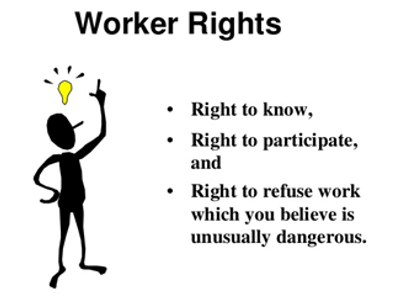by Dawn Kinoshita, Civil Aviation Safety Inspector—AOSH, Transport Canada
The Canadian Aviation Regulations (CARs) require air operators to demonstrate to Transport Canada Civil Aviation (TCCA) that they are adequately equipped and able to operate safely and in accordance with regulatory requirements. However, are you aware that it is mandatory under the Canada Labour Code (CLC), Part II and the Aviation Occupational Health and Safety Regulations (AOHSR) that air operators must safeguard the health and safety of their employees?
The CLC is intended to assist an air operator in providing an incident-free workplace or, at least, remove or mitigate any hazards by establishing a compliant occupational health and safety (OHS) program. Though the employer is responsible for overall compliance, it’s the partnership between operator and worker that ensures the safety of all, through either an OHS workplace committee or an OHS representative, depending on workforce numbers.
OHS committees and/or representatives contribute to preventing work-related occurrences by cooperating with the employer and solving workplace issues using an internal responsibility system. This system, based on collaboration, improves the overall understanding of workplace health and safety issues. An effective system is meant to address safety issues, training, and complaints, establish best safety procedures and practices, identify hazards, and encourage compliance.
The CLC provides employees with three basic rights. They have a right to know what hazards are present on the job and how they can be affected. They have a right to participate in health and safety activities, such as reporting hazards or participating in a health and safety committee. They have the right to refuse to do dangerous work as long as they are following proper procedures when doing so.
In addition, employees have the responsibility to participate in safety education and training, cooperate with all safety requirements, including wearing safety equipment, report all work-related accidents, occupational diseases, or other hazardous occurrences, and help to keep their colleagues safe.
A safe environment under an effective OHS program complies with regulatory legislation and contributes to the wellbeing of the operator and all employees. The Aviation Occupational Health and Safety (AOHS) program’s main objective is to ensure the health and safety of employees on board aircraft in operation. For information on the benefits of occupational health and safety and the establishment of an effective program, contact a Civil Aviation Safety Inspector–OHS who can provide additional assistance, or alternatively, access the AOHS website.
Employees who are not working on board an aircraft while in operation are covered under the Employment and Social Development Canada (ESDC)—OHS Labour Program. For additional information on employer responsibilities related to occupational health and safety, visit the website.
The Canadian Centre for Occupational Health and Safety (CCOHS) provides excellent resources on all aspects of OHS.
Links to legislation:
